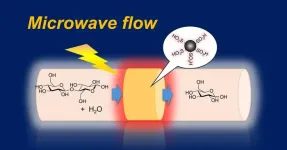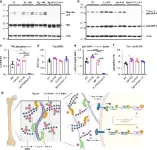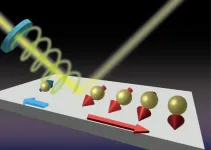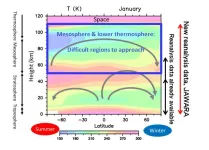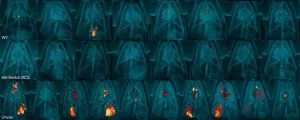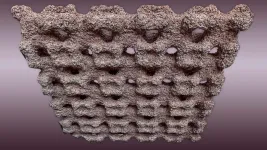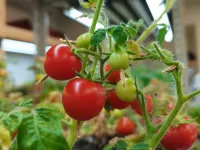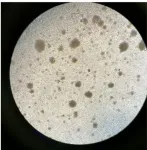(Press-News.org) Agriculture accounts for 8 percent of all greenhouse gas (GHG) emissions in Germany. “However, emissions within this sector, could be reduced by 22.5 percent or over 15 million tonnes of GHG annually, if the social cost of carbon were reflected in food prices,” says Julian Schaper, guest scientist at PIK and lead author of the study published in the journal Food Policy. In the Federal Climate Change Act passed in 2019, the government set itself the goal of reducing annual emissions from the current 62 million tonnes to 56 Mt GHG by 2030.
The social cost of carbon is an estimate of the economic damages that would result from emitting one additional tonne of carbon into the atmosphere in the future. Emission-intensive products such as meat and dairy would be most affected by such a climate fee of around 200 euros per tonne GHG, while prices for more sustainable products would rise less: Yoghurt and milk would increase by about 25 cents per kilogram, while beef prices could rise by over 4 euros/kg.
Using a demand model that provides a detailed and representative picture of how German households respond to price changes, the researchers assessed the effects of GHG pricing on consumption and associated emissions. “Households would tend to buy more food that is less carbon-intensive on average, such as vegetables. A climate fee would not only directly benefit climate protection, but could also encourage sustainable consumption,” explains PIK scientist Max Franks, author of the study.
In the researchers' model, the 8.2 billion euros generated by the climate fee are returned to consumers as a climate dividend, providing substantial relief to lower-income households, while wealthier households would bear slightly higher costs. "This form of redistribution helps to create a social balance that can promote the acceptance of such measures," Franks continues.
The authors of the study also see significant potential for broad public acceptance in the combination of a climate fee and dividend. It is crucial to clearly communicate that the measures effectively reduce emissions, that all revenues are returned to the public and that lower-income households are specifically supported.
Article:
Julian Schaper, Max Franks, Nicolas Koch, Charlotte Plinke, Michael Sureth (2025): On the emission and distributional effects of a CO2eq-tax on agricultural goods - The case of Germany. Food Policy. [DOI: 10.1016/j.foodpol.2024.102794]
END
Climate fee on food could effectively cut greenhouse gas emissions in agriculture while ensuring a social balance
2025-01-10
ELSE PRESS RELEASES FROM THIS DATE:
Harnessing microwave flow reaction to convert biomass into useful sugars
2025-01-10
Fukuoka, Japan—Researchers at Kyushu University have developed a device that combines a catalyst and microwave flow reaction to efficiently convert complex polysaccharides into simple monosaccharides. The device utilizes a continuous-flow hydrolysis process, where cellobiose—a disaccharide made from two glucose molecules—is passed through a sulfonated carbon catalyst that is heated using microwaves. The subsequent chemical reaction breaks down cellobiose into glucose. Their results were published in the journal ACS Sustainable Chemistry & Engineering.
Converting biomass into ...
Unveiling the secrets of bone strength: the role of biglycan and decorin
2025-01-10
A recent study has uncovered the essential roles of two proteoglycans, biglycan and decorin, in maintaining bone mass, water retention, and bulk/in situ mechanical competence. Through the use of genetically modified mouse models, the research demonstrates that while biglycan plays a predominant role in preserving bone structure and toughness, decorin significantly contributes to the bone’s mechanical properties. These findings reveal how these proteins interact with water and other matrix components to regulate the mechanical ...
Revealing the “true colors” of a single-atom layer of metal alloys
2025-01-10
Researchers Ibuki Taniuchi, Ryota Akiyama, Rei Hobara, and Shuji Hasegawa of the University of Tokyo have demonstrated that the direction of the spin-polarized current can be restricted to only one direction in a single-atom layer of a thallium-lead alloys when irradiated at room temperature. The discovery defies conventions: single-atom layers have been thought to be almost completely transparent, in other words, negligibly absorbing or interacting with light. The one-directional flow of the current observed in this study makes possible functionality beyond ...
New data on atmosphere from Earth to the edge of space
2025-01-10
A team led by researchers at the University of Tokyo have created a dataset of the whole atmosphere, enabling new research to be conducted on previously difficult-to-study regions. Using a new data-assimilation system called JAGUAR-DAS, which combines numerical modeling with observational data, the team created a nearly 20-yearlong set of data spanning multiple levels of the atmosphere from ground level up to the lower edges of space. Being able to study the interactions of these layers vertically and around the globe could improve climate modeling and seasonal weather forecasting. There is also potential for interdisciplinary research between atmospheric scientists ...
Self-destructing vaccine offers enhanced protection against tuberculosis in monkeys
2025-01-10
PITTSBURGH, Jan. 10, 2025 – A self-destructing vaccine administered intravenously provides additional safety and protection against tuberculosis (TB) in macaque monkeys, suggests new University of Pittsburgh research published today in Nature Microbiology.
The in-built safety mechanisms circumvent the possibility of an accidental self-infection with weakened mycobacteria, offering a safe and effective way to combat the disease that was named as the deadliest of 2024 by the World Health Organization.
“Although the idea of intravenous vaccination with a live vaccine may sound scary, it was very ...
Feeding your good gut bacteria through fiber in diet may boost body against infections
2025-01-10
The group of bacteria called Enterobacteriaceae, including Klebsiella pneumoniae, Shigella, E.coli and others, is present at low levels as part of a healthy human gut microbiome. But at high levels - caused for example by increased inflammation in the body, or by eating contaminated food - these bugs can cause illness and disease. In extreme cases, too much Enterobacteriaceae in the gut can be life-threatening.
Researchers have used computational approaches including AI to analyse the gut microbiome composition of over 12,000 people across 45 countries from their stool samples. They found that a person’s microbiome ‘signature’ can predict ...
Sustainable building components create a good indoor climate
2025-01-10
Whether it’s the meeting room of an office building, the exhibition room of a museum or the waiting area of a government office, many people gather in such places, and quickly the air becomes thick. This is partly due to the increased humidity. Ventilation systems are commonly used in office and administrative buildings to dehumidify rooms and ensure a comfortable atmosphere. Mechanical dehumidification works reliably, but it costs energy and – depending on the electricity used – has a negative climate impact.
Against this backdrop, a team of researchers from ETH Zurich investigated a new approach to passive dehumidification of indoor spaces. Passive, in this context, means ...
High levels of disordered eating among young people linked to brain differences
2025-01-10
More than half of 23-year-olds in a European study show restrictive, emotional or uncontrolled eating behaviours, according to new research led by the Institute of Psychiatry, Psychology & Neuroscience (IoPPN) at King’s College London. Structural brain differences appear to play a role in the development of these eating habits.
The study, published in Nature Mental Health, investigates the links between genetics, brain structure and disordered eating behaviours in young people. Researchers found that the process of ‘brain maturation’, ...
Hydrogen peroxide and the mystery of fruit ripening: ‘Signal messengers’ in plants
2025-01-10
A research team led by Prof. QIN Guozheng from the Institute of Botany of the Chinese Academy of Sciences has unveiled a previously unrecognized mechanism by which the RNA N6–methyladenosine (m6A) demethylase SlALKBH2 undergoes reduction-oxidation (redox) modification. This alteration affects its stability and its physiological role in regulating the normal ripening of tomato fruits.
In this study, published in Nature Plants, the researchers deepened their understanding of the role of hydrogen peroxide ...
T cells’ capability to fully prevent acute viral infections opens new avenues for vaccine development
2025-01-10
T cells can independently prevent acute viral infections to an extent previously thought only possible with neutralising antibodies.
Findings challenge the longstanding reliance on neutralising antibodies for assessing viral immunity, and suggest that development of future vaccines must consider both antibody and T-cell responses for comprehensive protection.
Singapore, 10 January 2025—Scientists from Duke-NUS Medical School and the Singapore General Hospital have discovered that T cells—white blood cells that can destroy harmful pathogens—can completely prevent viral infection, to an extent ...
